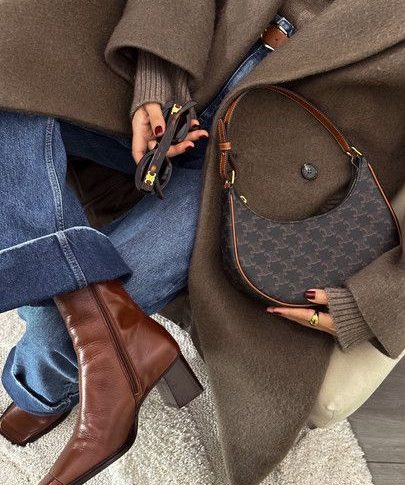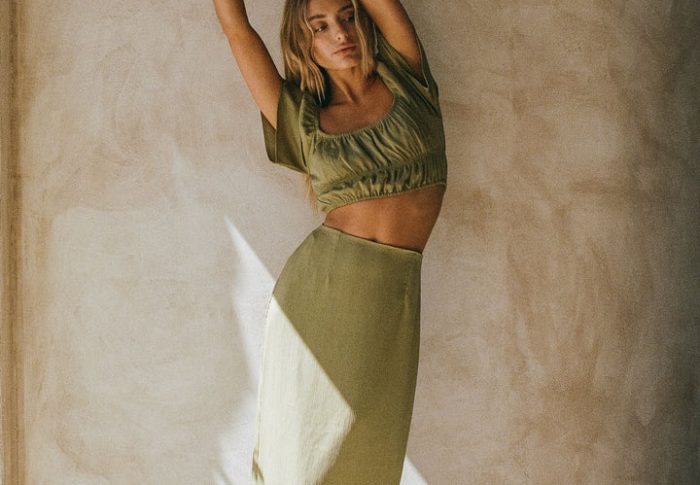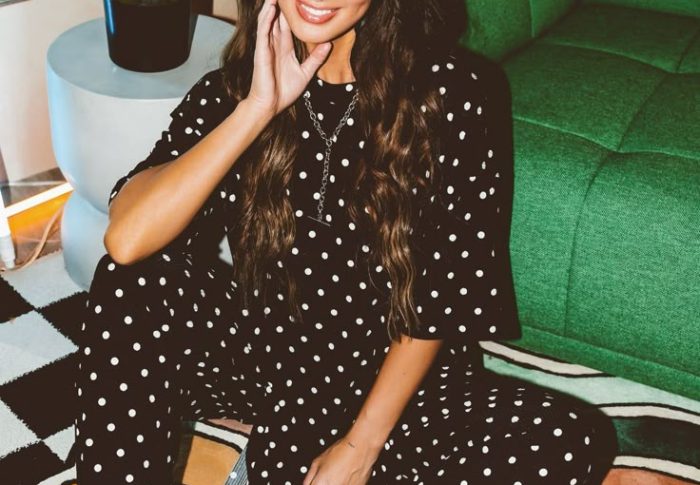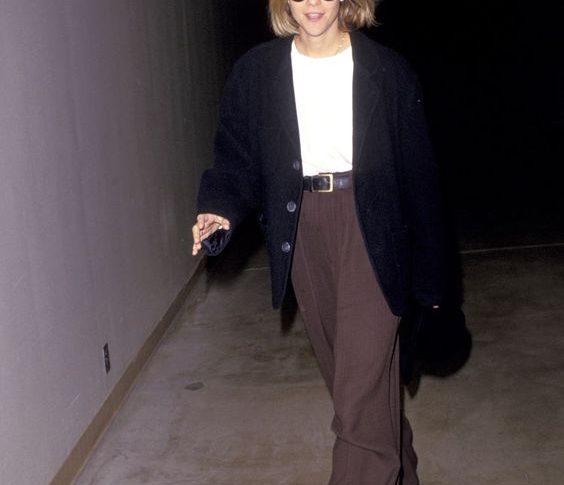Swimwear industry ‘on fire’ as Instagram’s year-round summers fill feeds with string bikinis and exotic beach posts

After the British model Iskra Lawrence released her own photos to her millions of Instagram fans, Aerie’s pink super scoop one-piece swimsuit sold the “high cut clumsy trophy” in less than two weeks.
“Back to New York, missed the sun,” Lawrence wrote in a March 2017 post, marking her comments with sun emoji. “Still too addicted to this @ aerie #onepiece tho.”
This super-exclusive is described on Aerie’s website as “comfortable, cute, with the right amount of exclusive news” and remains one of the brand’s best-selling suits. Aerie’s marketing director, owned by American Eagle Outfitters, said they can track the dramatic increase in sales to specific posts.
Swimwear sales have taken off in recent years, not just in the summer. Instagram is an increasingly effective way for retailers to showcase and sell their latest trends. This photo sharing platform provides users with a casual, fun forum to showcase their best beach shots with the #vibe they feel or the #inpirationalquote they want to share.
The company said in June that the platform currently has 1 billion monthly active users, up from 800 million users in September 2017. Executives say digital sales have become one of the fastest growing segments of the retail industry, with many buying behaviors coming directly from Instagram.
According to NPD Group’s consumer tracking service, when the Instagram was launched in 2010, the US retail sales of swimwear was about $3.6 billion. Last year, their average annual growth rate reached about 46%, reaching $4.6 billion. According to NPD data, in the past few months, the growth rate of US swimwear sales has increased at an average annual growth rate of 10% in May, which is the latest data.
Marketing executives and analysts say social media is increasingly driving purchases, especially in the off-season, where swimwear sales typically slow down. Summertime broadcasts on Instagram all year round, when most parts of the US are caught in deep freezes. Beach mail from Australia, South America and Africa will receive news. Analysts say the purchase can easily come from the company’s official account or the customer’s Instagram feed.
Jefferies analyst Janine Stichter said, “People go on vacation and they will return it.” He also attributed the growth of swimwear to social media. “They want to have a trendy swimsuit. Although it used to be something, you might have only bought one of them, it doesn’t seem to matter.”
After the British model Iskra Lawrence released her own photos to her millions of Instagram fans, Aerie’s pink super scoop one-piece swimsuit sold the “high cut clumsy trophy” in less than two weeks.
“Back to New York, missed the sun,” Lawrence wrote in a March 2017 post, marking her comments with sun emoji. “Still too addicted to this @ aerie #onepiece tho.”
This super-exclusive is described on Aerie’s website as “comfortable, cute, with the right amount of exclusive news” and remains one of the brand’s best-selling suits. Aerie’s marketing director, owned by American Eagle Outfitters, said they can trace the violent peaks of their sales back to specific posts.
Swimwear sales have taken off in recent years, not just in the summer. Instagram is an increasingly effective way for retailers to showcase and sell their latest trends. This photo sharing platform provides users with a casual, fun forum to show their best beach shots with the #vibe they feel or the #inpirationalquote they want to share.
The company said in June that the platform currently has 1 billion monthly active users, up from 800 million users in September 2017. Digital sales have become one of the fastest growing segments of the retail industry, with most of the purchases directly benefiting from Instagram, executives said.
According to NPD Group’s consumer tracking service, when the Instagram was launched in 2010, the US retail sales of swimwear was about $3.6 billion. Last year, their average annual growth rate was about 3.2%, reaching $4.6 billion. According to NPD data, the average annual growth rate of the US swimwear retail industry has reached 10% in the past few months, which is the latest data.
Marketing executives and analysts say social media is attractive for buying products, especially in the off-season, where swimwear sales typically slow. Broadcasting on Instagram throughout the summer, when most parts of the US are caught in a deep freeze, beach mail from Australia, South America and Africa will receive news. Analysts say the purchase can easily come from the company’s official account or the customer’s Instagram feed.
Jefferies analyst Janine Stichter said, “People go on vacation and they will return it.” He also attributed the growth of swimwear to social media. “They want to have a trendy swimsuit. Although it used to be something, you just bought it, but it doesn’t seem to matter.”
American Eagle Outfitters, Abercrombie & Fitch and Lululemon take social media advertising to the next level, including a team of managers who manage their accounts, each with more than 2.5 million Instagram fans. They paid for the celebrity endorsements and set up an official brand ambassador program for social media “influencers” who would give users free stolen goods, sometimes even cash, if they posted photos on their clothes.
Small brands with a limited brand range have also paid off. According to co-founder Sofia Garreton, in Lumahai Swimwear, about 75% of sales traffic comes from the company’s Instagram account. California startups have more than 23,000 fans on Instagram.
According to Jennifer Foyle, president of Aerie Global Brands, Aerie’s swimwear is “fired”. In the past two years, sales in the company’s swimming category have more than doubled.
Foyle said that organic drive sales on Instagram increased by 168% year-on-year.
Marshal Cohen, chief industry consultant for NPD Group’s retail industry, said: “This has a lot of communication with consumers.
“Consumers are leaning towards it, frankly, where are you going?” Cohen said. People rely on social media to do this. “” Unless you go to a swimwear store, you can’t get services anywhere to help educate you. ”
Abercrombie & Fitch CEO Fran Horowitz said that Instagram has established a dialogue between the company and its customers, who often respond to the products they buy. The company, including subsidiary Hollister, has already achieved similar success results from Instagram. Horowitz said, “In the past year, they are swimming,” Horowitz said.
Horowitz said, “Two gender brands are double-digit in swimming, and so far.”
Brand ambassadors – from professional models like Lawrence to social media influencers like Julia Nell – are looking at the swimwear industry and turning it into a virtual catalog.
Nell’s Instagram account @jem_touchdown is littered with exotic beaches and pool photos. A bikini in the pool at the Icon Hotel in Hong Kong, a one-piece thong at Hotel de Crillon in Paris, and bikini bottoms on Tulum Beach, Mexico (two coconuts cover other important parts).
“This is my show,” she talks about her Instagram account, which has more than 88,000 fans. She sometimes writes down the clothes she wears. One day it might be a San Lorenzo bikini. Next she wore Quintsoul thongs. Then came the top player of Calvin Klein.
App developers in Venice Beach, California began recording her travels on the site in 2011, primarily for her daily work.
“Then people started to contact me,” Nell recalls, including Nike in 2013. “I realized that I can get things for free.” Free gifts include swimwear, dermatology appointments, hotel discounts, and $500 to $2,500 for posting photos on Instagram. Although Nell does not explain the amount paid by each brand, she said that the amount of clothing and cosmetics she saved through Instagram is “priceless.”
Kristen Curtis of Chandler, Arizona, on the outskirts of Phoenix, used her account @ipackedlite to discount. If she posts a photo of the product, the company will give her a 30% to 50% discount.
Donna Calin is the manager of a recycling plant in Chicago, using Instagram as an idea. She rotates between about 20 different swimsuits every season.
“I didn’t stay on any of the brands. I use Instagram to get inspiration and see different costume collections,” says Calin, who uses the @blow_them_away handle on Instagram.
Companies are more likely to buy their products and provide links in their accounts to allow customers to shop on their phones. It also provides retailers with accurate data about where to buy.
The fastest-growing part of Aerie’s digital business stems from mobile purchases, and they are not all spokespersons who pay for them. Ordinary consumers use the company’s promotional label #AerieReal to share nearly 50,000 posts that encourage women to post unfiltered photos on social media while wearing Aerie products.
The teen retailer has embraced a positive body image movement and avoided using traditional models. Lawrence is one of the four “examples” or paid spokespersons, and Aerie used to promote their clothing, including swimwear. In addition to Lawrence, an outspoken sports advocate, singer Rachel Platten, actress Yara Shahidi and gold gymnast Aly Raisman represent Aerie. They have over 9 million Instagram fans.
Lawrence has the most Instagram fans among the four women: 4.1 million. Her swimming positions each generate between 100,000 and 200,000 – with nearly 400,000. Women often ask her about the content in the comments section and how she wears it. She said her first Aerie post was “viralized” and added that she woke up with about 80,000 new fans.
Lawrence said that Instagram is “a very good way to find someone who has more connections with you, making you feel more diverse than what you find in magazines or online.” “You can find someone you like.” And the people you trust.”





-
-
1 year
Tagged Chunky Loafers, Lace-up boots, Mules